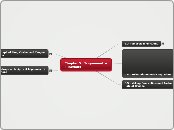Chapter 5 : Trigonometric Functions
5.3 : Sinusoidal Functions
> There are two forms that we learn : f(x) = a sin [k(x - d) + c] f(x) = a cos [k(x - d) + c]> The concept is similar to 'a [f(x - d) + c]' but there are few differences with the terms used.> As such : a refers to amplitude and the formula is, a = (Max-Min) / 2 k refers to the horizontal stretch or compression, k = 2pi / P. In this case, P refers to 'period' d refers to horizontal shift to left or right or nown as 'Phase Shift' c refers to the vertical shift upward and downward > Reflection happens at the x - axis when '-a'. For instance: 4 cos x at interval [0, 2pi] will be plotted starting from y-intercept 4 and the shape would be a smiling face. But, for -4 cos x at interval [0,2pi], it willbe plotted from -4 and the shape would be a frowning face.
5.4 : Solve Trigonometric Equations
2 methods :- By using pencil and paper- By factoringMethod 1 : Pencil and paper- It is done by drawing a circle and divide it into four quadrants- The trigonometric is partly solved (or until the constant and the coefficient / amplitude is moved to the RHS. ) Example : 2sin x - 1= 0 2sin x = 1 sin x = 1/2 sin x = +1/2- Observe the '+' sign. This determines that the angle, x is located at Quadrant 1 and Quadrant 2- And, be careful with the restriction. If the question specifies x E [0, 2pi], then the angle, x must be within the range.
5.5 : Making Connections and Instantaneous Rate of Change
sinusoidal models apply to many real world phenomena that do not necessarily involve angles. The speed wobbles of these events can be modelled by sinusoidal functions.the average and instantaneous rates of change for sinusoidal function can be determine with the aid of GSP.
5.1 : Graph of Sine, Cosine, and Tangent Function
The graph of y= sin x, y= cos x, and y= tan x are periodic~ The graph of y= sin x and y= cos x are similar in shape and have an ampitude of 1 and perios of 2~ The graph of y= sin x can be transformed into graph modelled by equations of the form y= sin x + c, y= a sin x, y= sin (x - d), and y= sin kx. Similarly, the graph of y= cos x cann be modelled the same.~ The graph y= tan x has no ampitude because it has no maximum or minimum values. It is undefined at value of x taht are odd multiples of , such as and . The graph becomes asymptotic as the angle approches these values from the legt and the right. The period of the function is .
5.2 : Graph of Reciprocal Trigonometric Functions
~ The graph of y= csc x, y= sec x, and y= cot x are periodic. They are related to the graph of the primary trigonometric functions as reciprocal graphs.~ Reciprocal trigonometric function are different from inverse trigonometric functions .
csc x
csc x means (1/sin x), while sin-1 x asks you to find an angle that has a sine ratio equal to x.
sec x
sec x means (1/cos x), while cos-1 x ask you to find an angle that has a cosine ratio equal to x.
cot x
cot x means (1/tan x) while tan-1 x ask you to find an angle taht has a tangent ratio equal to x
